We paid the middle Girvan a quick visit this morning to check on the willow bank reinforcements we installed last April along with our volunteers.
This stretch of the river was suffering from severe erosion and we arranged the demonstration event to show anglers how to install willow spilling and other green bank engineering techniques to help reduce bank erosion where it is a problem. This technique is good for small scale areas where hard engineering isn’t desirable or appropriate. It also seems to have considerable potential on a larger scale but this may require a Controlled Activities Regulation (CAR) license from SEPA in advance of the works. Restricting any intervention to just a few meters (less than 50m) ensures that this type of reinforcement can be performed under General Binding Rules (GBR’s) but if in doubt check first with your local SEPA office as there’s nothing worse than doing something to help and inadvertently breeching rules (we know this from first hand experience elsewhere).
Some of what we did was rather experimental (at least for us) and it was good to check to see how it’s held up over winter. We worked on two small sections of riverbank where thousands of tonnes of soil had been lost to the river along with fence lines and prime land. The cause of the erosion is historical straightening and currently the river is attempting to cut itself a new course as all watercourses do through time. However, the landowner wished to slow the process and for us at least, we hoped to reduce the volume of silt that smothers the river bed downstream. This is detrimental to fish spawning and survival.
At the upstream scar, we installed willow faggots and wired them in place along the water’s edge. This method is quicker than spilling and we weren’t sure how it would fare but early results indicate that it is doing well and has trapped tonnes of sand and silt on the bank behind the bundles. In another month or so, this willow will start growing again and it may be advisable to crop the whips off early and use them as cuttings allowing the stumps to bush and in future provide more cuttings and a denser barrier to protect the banks behind.
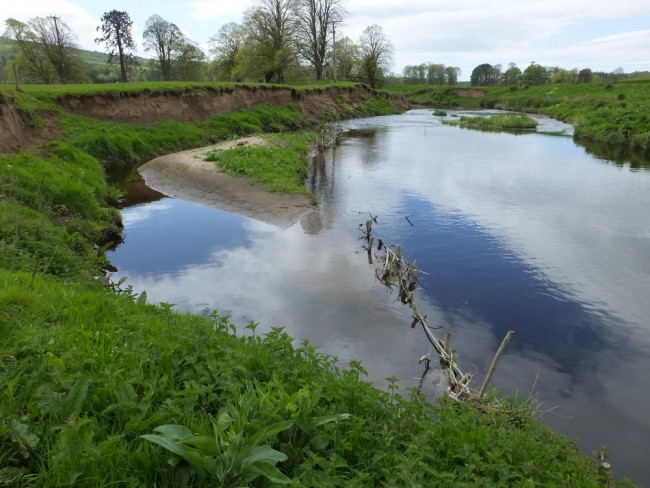
The upper site where an enthusiastic angler had installed hazel spilling with some success. Hazel can’t root from cuttings so offered limited long term benefit. We added willow faggots here last April to boost effectiveness (see the next photo)
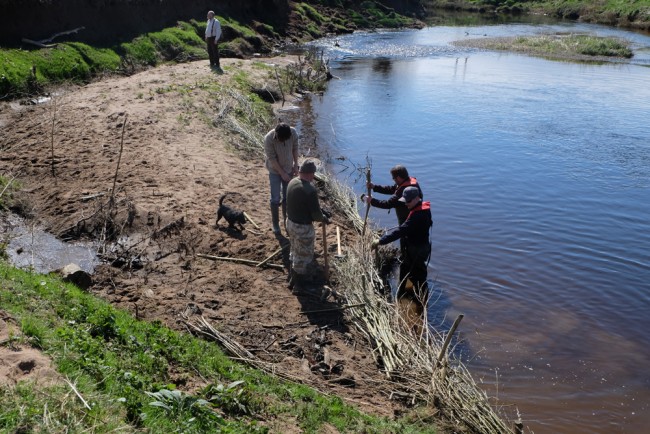
This time we used willow faggots (bundles) staked into the top of the previously installed Hazel spilling. Hopefully, this will allow deposition to continue rebuilding the eroded bank. Willow cuttings were planted across the area.
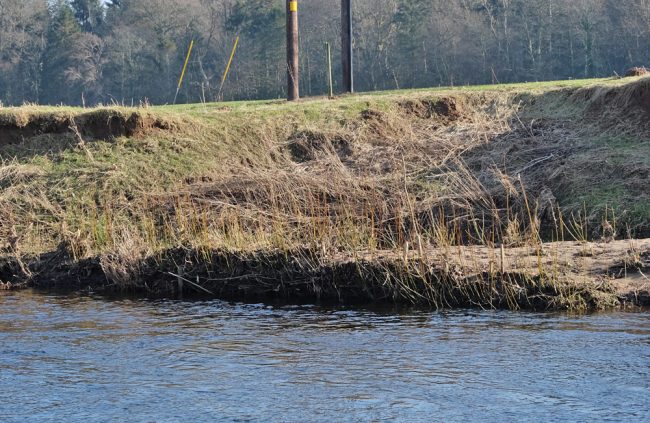
Exactly the same spot as in the two previous photos but from across the river and in a slightly higher flow. You can clearly see the height of the sediment deposits are growing as are the willow faggots. This appears to be achieving the desired results. Willow cuttings can be seen growing across the bank behind. These were planted last spring.
Further downstream, the estate had installed tree stump reinforcement on the eroding outside of the bend. This was deep water and not easy to access so under their CAR license, they used heavy equipment to place fallen trees along the bank. Some of these trees washed out but most remained in situ and it appears to have slowed the worst of the erosion although it does continue in places.
We installed spilling along approximately 20m of riverbank that appeared likely to disappear without some assistance. 10 months on and the spilling appears to be doing a good job of protecting what was bare soil and erosion has ceased. The grass has grown over the soil further strengthening the bank. We may attempt to extend this upstream into the deeper water in a month or two if we can.
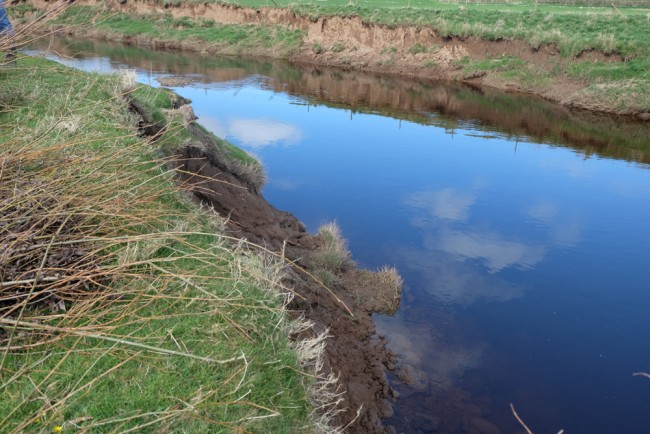
A photo taken before we started work last year. This area of erosion was where we installed spilling last April with the help of volunteers.
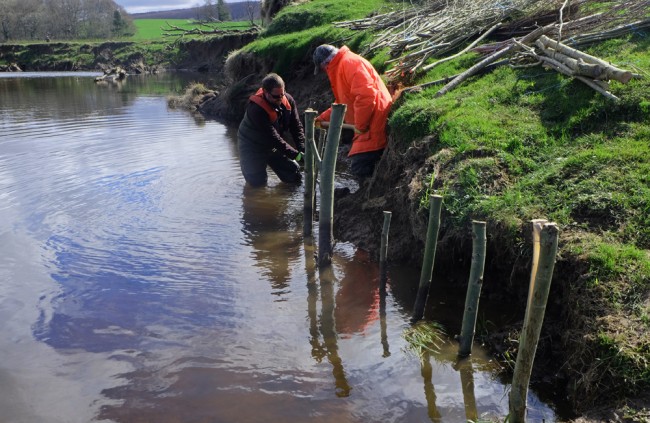
We start by driving the willow stakes into the river bed
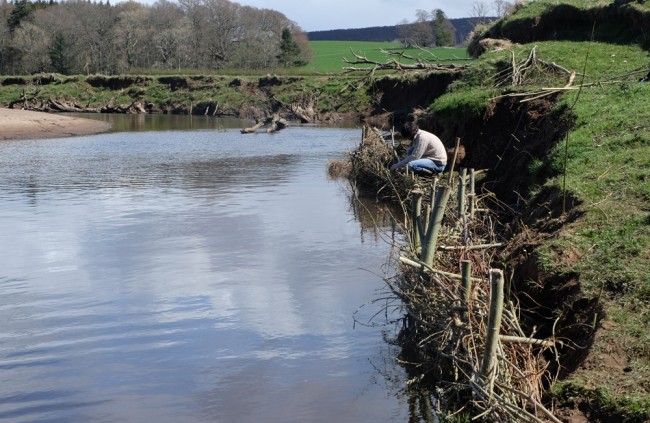
The same section of river bank as in the last photo after an hour or two
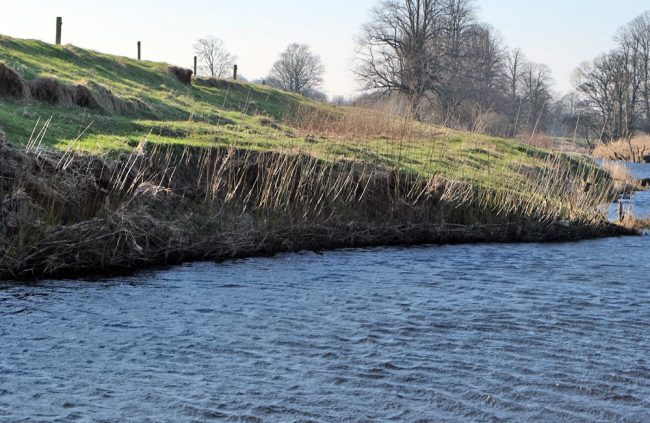
10 months later and as we found it today but viewed from the opposite bank. Things are looking much more stable and promising. We may extend our efforts upstream into deeper water this season.
All in all it seems both the faggots and spilling are doing their intended job and doing it rather well. We will coppice both sections and use the cuttings to add to the many already planted by Gary Anderson during the event last year. His cuttings are doing well and the entire bank should look quite different as the leaves appear in the spring. We may also sow wild grass seed mix over the remaining bare soil in the spring as that should be more beneficial than the tall herbs and plants that die back over winter.
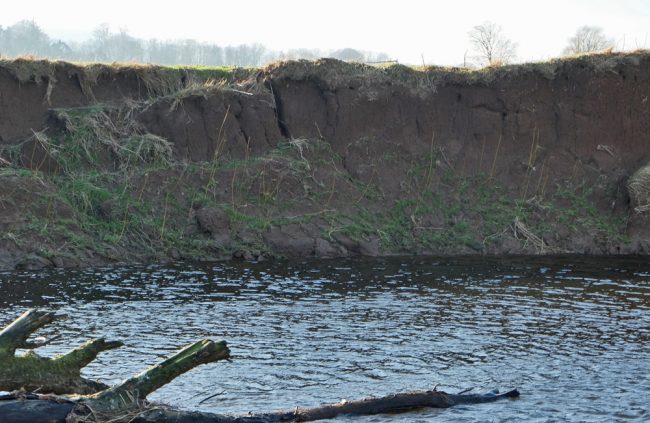
Gary’s cutting are doing well.
The original post about the volunteer event can be found by following this link http://www.ayrshireriverstrust.org/blog/2016/04/16/kilkerran-banks-stabilisation-event/
Source: Ayshire River Trust – Willow spilling revisited
